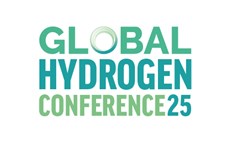Enagás launches plan for hydrogen network
Published by Willow Munz,
Editorial Assistant
Global Hydrogen Review,
Enagás has launched the Public Participation Concept Plan (PCPP) for the Spanish Hydrogen Backbone Network in Asturias at an institutional event attended by the President of the Principality of Asturias, Adrián Barbón; the Under-secretary for Ecological Transition and the Demographic Challenge, Miguel González Suela; and Enagás CEO, Arturo Gonzalo.
At the event, held on 15 October 2025 at the Teatro Auditorio in Pola de Siero, the details of this project, which will contribute to the sustainable economic development of Asturias, were presented.
Following the launch of the PCPP in the Principality, information points will be set up in 23 Asturian municipalities: Avilés, Gozón, Carreño, Gijón, Corvera de Asturias, Llanera, Oviedo, Ribera de Arriba, Morcín, Mieres, Aller, Langreo, Riosa, Lena, Noreña, Sariego, Siero, Nava, Piloña, Parres, Ribadesella, Llanes and Ribadedeva. The Plan, which will run until 28 November 2025, also provides for participatory workshops to be held in 13 of these localities.
The event was attended by mayors and councillors from these localities, as well as representatives of the main industrial players and companies in the hydrogen value chain in Asturias.
Adrián Barbón, President of the Principality of Asturias, said: "At a time when the guarantee of energy supply is key to the industrial revival of Asturias, the deployment of the Enagás network is a major boost for the Principality to lead the move towards a green economy in Spain."
Miguel González Suela, Under-secretary for Ecological Transition and the Demographic Challenge, commented: "Renewable hydrogen is a project for the whole country of Spain, to which more than €3 billion have been allocated from the Recovery Plan; the launch of this Public Participation Plan is another example that it is a participatory project, open to all, which has an additional significance in Asturias due to the importance of hydrogen projects in the Principality".
Arturo Gonzalo, CEO of Enagas, stated: "The energy transition will only have a real impact if it progresses hand in hand with the regions, and this is the objective of the Public Participation Plan of the Spanish Hydrogen Backbone Network in Asturias. Spain has the opportunity to be a major European hydrogen hub, in which Asturias – and its industry – will play a crucial role as a strategic location of the Trunk network, where two of its major axes will converge: the Vía de la Plata Axis and the Cornisa Cantábrica [Cantabrian Coast] Axis".
Asturias, the nerve centre of the future Spanish Hydrogen Backbone Network
The Principality will have a network of around 220 km of hydro-products, as part of the Via de la Plata Axis and the Cantabrian Coast Axis. Specifically, four sections of the network will run through the Principality: León-Llanera, about 71 km; Llanera-Reocín, about 118 km; El Musel branch line, about 18 km; and Avilés branch line, about 13 km.
The future network will turn Asturias into a hub of the hydrogen market in Spain, with a potential aggregation node in Llanera for future green hydrogen production and consumption projects. The results of the Call for Interest - submitted in 2024 - of the first axes of the Spanish Hydrogen Backbone Network that form part of the European Project of Common Interest (PCI) list, identify Asturias as one of the main centres of consumption and production of renewable hydrogen in Spain.
The hydrogen economy will generate more than €32 billion of GDP in Spain and maintain some 81 000 jobs during the development of the Backbone Network.
The largest Public Participation Plan developed in Spain
Asturias is the recipient of the largest public participation plan of its kind in Spain, which will pass through a total of 13 autonomous communities and more than 500 municipalities. Enagás launched the plan on 25 April at the National Hydrogen Centre in Puertollano, in Castile-La Mancha, Spain, the first autonomous community in which Enagás held participatory workshops open to all interested parties. Subsequently, the Participation Plan continued in Extremadura, Andalusia, Cantabria, and Castile and Leon.
The Spanish hydrogen backbone network’s PPCP will harness the inputs of the autonomous communities and the councils of the towns and cities through which it passes, the 50-plus government authorities, 380 organisations and associations and all the citizens interested in taking part. The deployment of the Plan in Spain is expected to take 18 months, and, once it has been completed, a final report on the results of the process will be drawn up.
The aim of the Plan is to share information on the future hydrogen network with all the stakeholders, resolve queries, explain the need for the project, foster the active participation of the communities in the process, mitigate any impacts on the ground, and guarantee the most appropriate social and environmental actions from an early stage.
Read the article online at: https://www.globalhydrogenreview.com/hydrogen/17102025/enags-launches-plan-for-hydrogen-network/
You might also like
ITM Power secures two engineering contracts
ITM Power have been awarded two engineering contracts, one in Australia and one in Canada.


